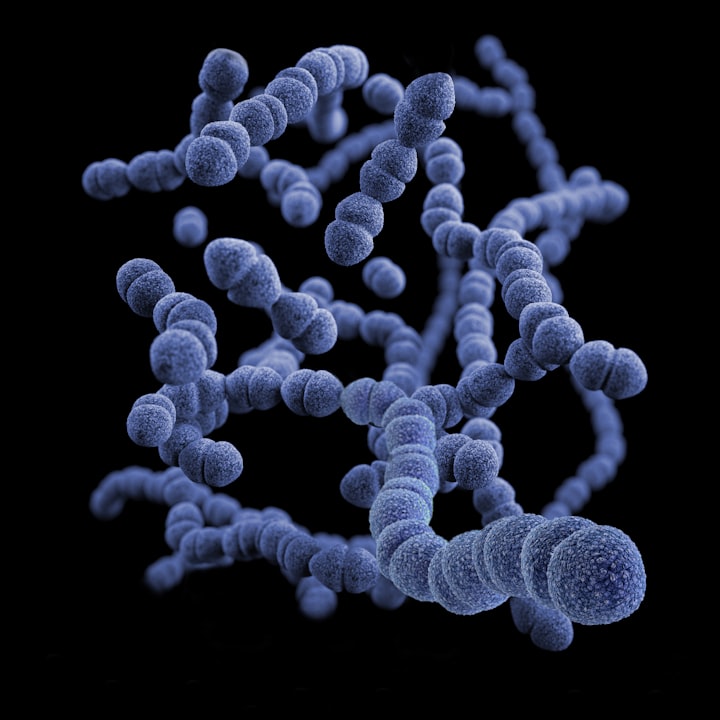There's Anywhere from 2-9 Pounds of Bacteria in the Body
There's Anywhere from 2-9 Pounds of Bacteria in the Body
Bacteria are known to be contagious, causing disease. However, have you noticed that your body contains 2-9 pounds of bacteria at any one time? Bacteria are literally needed for cover and body purposes. So, while some viruses cause problems and illness, others are not!
What are good bacteria?
All the bacteria that sleep in your body are part of your microbiome. The microbiome is the whole set of germs in your body. Your skin, abdomen, genitals are many important areas that are permanently infected. These types help with a few tasks. According to your genital system, for example, good bacteria are often the worst germs, which keep them from multiplying.
For example, when women become infected with yeast, it is not the way certain types of bacteria invade their body. Women usually have yeast inside their genitals, but the yeast is well controlled again and again. It helps to preserve a woman's entire life. However, when the pH changes for a number of reasons, this yeast grows into an enlarged number which is a measure of irritation and excretion. Antibiotics and suppositories help control this activity and restore the amount of yeast in its normal numbers.
How antibiotics destroy good bacteria
However, antibiotics are not selective and can kill good bacteria in your digestive tract. Your small and large intestine is packed with billions of germs. Some are not bad for you, but most of them help you digest your food. If you take antibiotics that are bad for another part of your body, it will kill a lot of these good germs, especially in your gut. When good bacteria are killed, they do not separate the bad bacteria, make them fertile and cause digestive problems; diarrhea, abdominal pain, vomiting and digestion.
The opposite can be true. If you have a bacterial infection in your lungs or stomach, then taking antibiotics can cause a yeast infection. The key point is that good bacteria are important in maintaining homeostasis in our bodies.
What are bad bacteria?
Bad germs in our body will cause illness and disease. Among them are streptococcus, enterobacteria, pneumoniae, and other insects with unusual names. Many of these bacteria are already living in our bodies. for example there are germs that sleep in our mouths and work for the purpose of helping with food spoilage. However, in microaspirations - where tiny droplets move the mouth and lungs - these bacteria spread to the delicate world of lung tissue. inside the lungs, it can cause inflammation of hard tissues and diseases, even if they stay in the mouth easily.
Bad bacteria also cause infections such as pneumonia and streptococcal sore throat, or laryngitis. many of these insects are external invaders, but most of them are fratricide effects. The body tries hard to fight these diseases, however, and our bodies do not have a good purpose. In an effort to eradicate infectious agents, they cause damage to normal body tissues. that's why when you are sick you feel bad. Your body raises the temperature in an effort to fight infections and use all the means at your disposal. So, as your system releases bacteria, you will also see swelling, inflammation, itching, curved nose, etc., this is because your body is trying to get rid of the invader.
This immunological crash program is often stressful, but it is very interesting to find all the tools built into our bodies to help protect us from all the dangers in the world that are trying to make us sick.
Where are the different germs in my body?
Another place where you will find an outdated community of germs is inside the skin. The skin is the largest organ in the body, covering the entire surface. for the purpose of creating a barrier between the surface of the earth and our aggressive interior. Assisting with this function is the microbiome of the skin.
Many of these bacteria are harmless, or have neutral skin contact. It hangs and does not hurt or benefit us and our body does not hurt or enjoy it. The two opposite types of relationships between the skin microbiome and us are commensalism and harmony. Commensalism is where a person benefits while the opposite is not harmful or beneficial. This relationship can come in any form, although it is very likely that we will benefit while they are just being. Cooperation is where both benefit. for example, bacteria get their energy from certain foods that will harm us. there is also the association of insects, but which will be the result of positive viruses transmitted by a non-invasive or foreign invader.
In fact, all the exposure to the surface of the earth is more contagious. The nose, eyes, ears, mouth, and any entrance (i.e. the hair follicles and sweat glands) will have their own microbiota. These microbiota contain both good and bad bacteria that sleep through the common thanks to keeping us healthy. When this balance is gone, yes guess, we get sick. And, if any of those bacteria go in the wrong direction, guess what, we're sick.
Invisible weight
Although these bacteria weigh a very small amount alone, combined, they will be a source of 2-6 pounds per person per 200 kg. We cannot see these creatures, but they are everywhere in our body and are needed to keep us healthy. Even germs have a bad reputation, we need them. If you have ever been sick and had digestive problems or had to need antibiotics, be sure to eat yoghurt or take probiotics in exchange for those good little helpers.






Comments
There are no comments for this story
Be the first to respond and start the conversation.